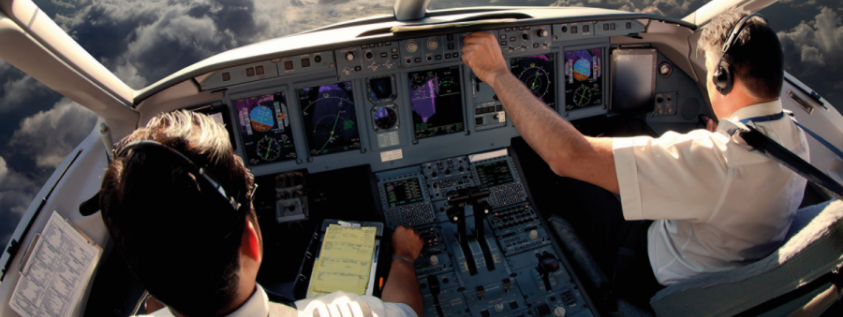As explained in previous posts, there are different types of aircraft. Some of them, due to the complexity of their operation, require two pilots in the cockpit. Today we explain the importance and differences between Pilot Flying (PF) and Pilot Monitoring (PM).
Aircraft certified as “multi-crew” by their manufacturers are aircraft that, due to their complexity and size, require more than one pilot in the cockpit. Years ago even a flight mechanic was required, but nowadays there are two occupants in the cockpit. Usually a commander and a co-pilot, or First Officer.
When two pilots fly a fixed-wing aircraft that requires a multiple flight crew, the aircraft commander who holds the rank of captain and flies as Pilot in Command (PIC), normally occupies the left seat and the co-pilot will occupy the right seat in the cockpit.
On whom does the final responsibility fall?
Although the ultimate responsibility for the aircraft and its occupants always rests with the senior pilot, onboard tasks can be distributed independently of the onboard hierarchy.
Thus, before flight commencement, it is decided which pilot will assume responsibility for flying the “Pilot Flying (PF)” aircraft, and who will be the “Pilot Monitoring” (PM) or, in other words, which pilot will assume the role of supervising the PF’s flight management and aircraft control actions, and carry out tasks such as communications or navigation. This differentiation of roles is carried out both in normal procedures and in emergency management.
At EAS Barcelona, during the final part of the ATPL pilot training, the MCC course (Multi crew Cooperation Course) is carried out, which trains pilots in teamwork in a multi-pilot aircraft. In this training phase, during 40 hours onboard an Airbus A320 simulator, all normal and emergency operation procedures involving the PF and the PM are practiced, as well as the standard company procedures; the APS (Airline Pilot Standard).
FP and PM functions
It is the Operations Manual that specifies all the functions of the PF and PM, but one of the most important aspects of any PM’s functions is that of cross-checking the PF’s actions, so that we can be sure of every step that is performed. In fact, this is one of the most important parts of why a two-pilot flight crew is specified.
Depending on what the aircraft commander determines, the two roles during any given service can be shared so that both PF and PM roles are assumed by both.
In the early days, when the terms PF and PM /PNF were first introduced (the latter is no longer used), it was normal for the roles to be subject only to controlling and executing the corresponding tasks.
Today, some operators use the concept of “supervised approach”, where the pilot who is PM during descent becomes PF for landing in order to improve operational safety aspects
What is being done while passengers are boarding?
While the passengers are entering, the flight plan is entered into the Flight Management System, the route is programmed and various data for some calculations to be performed by the System itself.
In some Companies and for some flights, the Pilot can receive from his company’s Operations the route that can be automatically entered always with his authorization. In any case, always check that the flight plan corresponds to the flight plan of the Operational Flight Plan, which is the legal document where it is described.
During boarding, pilots carry out an internal briefing to define the operation to be performed, the characteristics of the airport they are leaving from, and the characteristics of the aircraft they are going to fly.
Finally, before closing the aircraft doors, the commander signs the Load Sheet, a very important document in which he acknowledges and accepts everything that is loaded, the weight of the aircraft and its center of gravity, the number of passengers, and the type of goods it is carrying. A copy of this document is made and kept on the ground and another one in the aircraft. And after the Cargo Sheet is signed, we proceed to close doors.”
